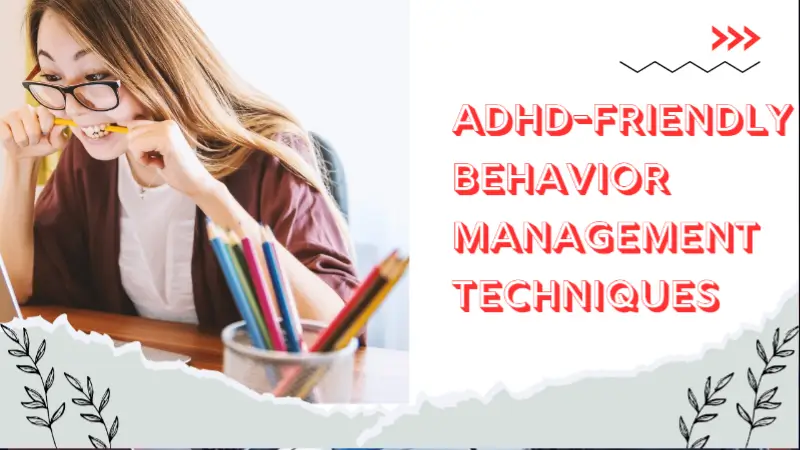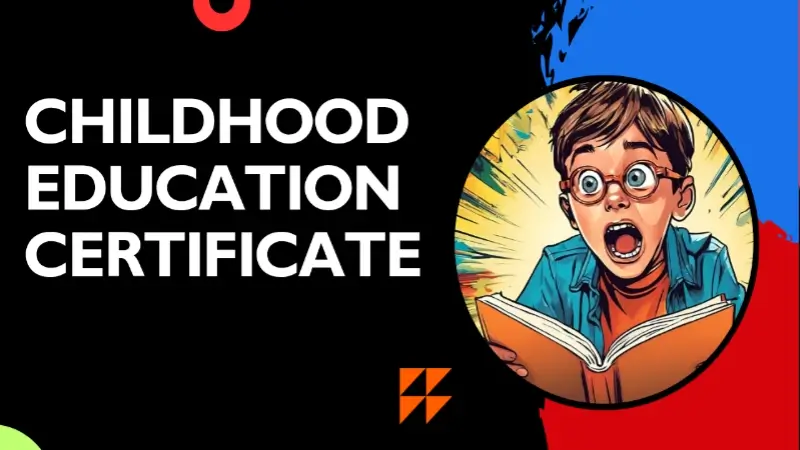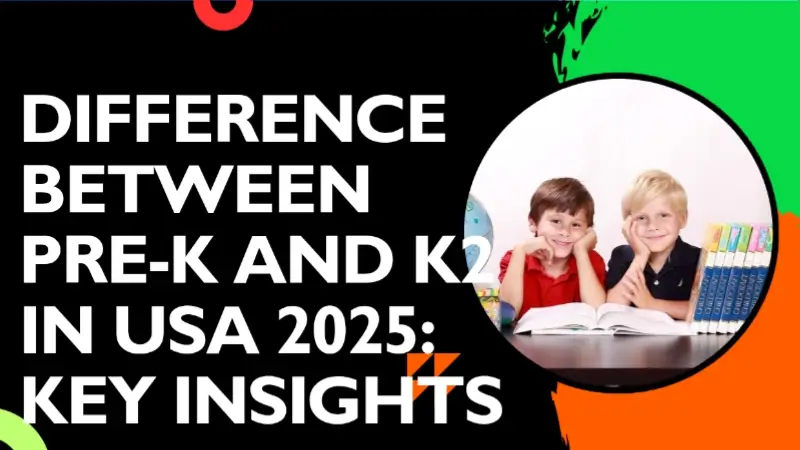Effective ADHD-Friendly Behavior Management Techniques
Learn proven ADHD-friendly behavior management techniques for parents and teachers. Discover research-backed tips, practical strategies, and resources to support children with ADHD.
Effective ADHD-Friendly Behavior Management Techniques
Managing behavior in children with ADHD can be challenging for both parents and educators. This comprehensive guide explores ADHD-friendly behavior management techniques designed to help children succeed.
In this article, we address common issues like inconsistent routines, frustration during transitions, and communication challenges. If you are struggling to support a child with ADHD or looking for practical ways to improve classroom management, you’ve come to the right place.
Our step-by-step strategies are based on research and expert advice. By following these ADHD-friendly behavior management techniques, you can create a supportive environment that fosters growth and positive behavior.
Understanding ADHD and Behavior Challenges
Attention-Deficit/Hyperactivity Disorder (ADHD) affects many children, impacting their ability to maintain focus, regulate emotions, and follow directions. These challenges often lead to disruptive behaviors both at home and in school. Understanding these underlying issues is the first step in implementing ADHD-friendly behavior management techniques.
What Is ADHD?
ADHD is a common neurodevelopmental disorder that affects a child’s ability to concentrate, control impulses, and manage energy levels.
According to the Centers for Disease Control and Prevention (CDC), ADHD can result in difficulties with time management, organization, and following through with tasks. Recognizing these challenges helps in tailoring behavior management techniques that meet the specific needs of children with ADHD.
Common Behavior Challenges
Children with ADHD often face:
Impulsivity: Acting without thinking, which can lead to disruptive behavior.
Inattention: Struggling to focus on tasks, which can result in missed instructions.
Emotional Regulation Issues: Difficulty managing emotions, leading to outbursts.
Transition Difficulties: Problems shifting between activities smoothly.
By understanding these challenges, parents and teachers can better apply ADHD-friendly behavior management techniques that address the root causes of the behavior.
Core ADHD-Friendly Behavior Management Techniques
Implementing effective behavior management strategies can make a significant difference in a child’s daily life. Below, we explore several techniques designed to support children with ADHD in both home and classroom settings.
1. Establish Clear Routines and Structure
Why Routines Matter:
Children with ADHD thrive on consistency. Clear routines help minimize distractions and reduce anxiety. Creating a structured environment is one of the key ADHD-friendly behavior management techniques.
Practical Tips:
Daily Schedules: Develop a daily schedule that outlines specific times for activities such as homework, play, and meals.
Visual Schedules: Use pictures or charts to create a visual schedule that the child can easily follow.
Consistent Bedtime and Wake Time: Consistent sleep patterns are crucial for managing ADHD symptoms.
Studies indicate that structured environments can improve behavior and reduce stress for children with ADHD (see CDC ADHD guidelines).
2. Use Positive Reinforcement
Importance of Positive Reinforcement:
Positive reinforcement is a powerful tool in ADHD-friendly behavior management techniques. It involves rewarding desirable behavior to encourage its repetition.
Strategies to Implement:
Immediate Praise: Provide immediate and specific praise when the child exhibits positive behavior.
Reward Systems: Create a reward chart where children earn points or stickers for following instructions or completing tasks.
Incentives: Offer small rewards, such as extra playtime or a favorite snack, when behavior goals are met.
Research shows that positive reinforcement helps in building self-esteem and promoting long-term behavior change in children with ADHD.
3. Set Clear and Consistent Boundaries
Setting Boundaries:
Clear and consistent boundaries are essential for managing behavior in children with ADHD. They help define acceptable behavior and provide structure.

How to Set Boundaries:
Simple Rules: Develop simple, clear rules that are easy for the child to understand.
Consistent Consequences: Apply consequences consistently when rules are broken. This could be a time-out or loss of a privilege.
Visual Reminders: Post the rules in a visible area to remind the child of expected behavior.
Consistent boundaries offer a predictable framework that can reduce anxiety and improve compliance.
4. Enhance Communication and Social Skills
Effective Communication:
Improving communication is a key component of ADHD-friendly behavior management techniques. Clear, calm communication can prevent misunderstandings and reduce frustration.
Tips for Better Communication:
Active Listening: Ensure you listen to the child’s concerns and validate their feelings.
Simple Instructions: Give simple, direct instructions rather than long-winded explanations.
Role-Playing: Practice social interactions through role-playing to build social skills and problem-solving abilities.
By developing better communication skills, children with ADHD can better understand expectations and respond more appropriately.
5. Implement Behavior Charts and Monitoring
Using Behavior Charts:
Behavior charts are a practical tool for tracking progress and encouraging self-monitoring. They are an effective part of ADHD-friendly behavior management techniques.
How to Create a Behavior Chart:
List Behaviors: Identify specific behaviors you want to encourage.
Track Daily: Have the child mark their progress on the chart daily.
Review Regularly: Discuss the chart with the child, celebrating successes and setting goals for improvement.
Behavior charts provide a visual representation of progress, which can be motivating for children and informative for caregivers.
Additional ADHD-Friendly Strategies for Home and School
6. Create a Calm Down Corner
Purpose of a Calm Down Corner:
A designated space where a child can go to calm down when feeling overwhelmed is very effective. This is one of the ADHD-friendly behavior management techniques that focus on emotional regulation.
How to Set It Up:
Comfortable Space: Use soft pillows, calming colors, and soothing objects.
Clear Instructions: Teach the child that this is a space for self-soothing, not punishment.
Regular Use: Encourage the child to use this space when they feel upset to regain control of their emotions.
A calm down corner provides a safe space for self-regulation and helps reduce the frequency of emotional outbursts.
7. Incorporate Movement Breaks
The Role of Physical Activity:
Regular movement breaks can help manage ADHD symptoms by reducing restlessness and improving focus. Incorporating physical activity into the daily routine is a simple yet effective ADHD-friendly behavior management technique.
Practical Ideas:
Short Exercise Breaks: Schedule short breaks for jumping jacks, stretching, or a quick walk.
Active Learning: Incorporate movement into lessons, such as using a ball for questions or group activities.
Outdoor Time: Ensure the child has time to play outside and expend energy.
Physical activity not only improves concentration but also boosts overall well-being.
8. Use Visual Aids and Reminders
Visual Supports:
Visual aids can help reinforce expectations and routines. They serve as constant reminders of behavior guidelines and help children with ADHD stay focused.
Types of Visual Aids:
Charts and Posters: Use posters that outline daily routines, rules, and schedules.
Timers: Visual timers help children understand the passage of time and manage transitions.
Picture Cards: Use cards to illustrate steps in a task or behavior expectations.
These visual tools are simple yet powerful aids that contribute to a structured and predictable environment.
9. Encourage Self-Monitoring and Goal Setting
Empowering the Child:
Teaching children to monitor their own behavior and set achievable goals fosters independence and responsibility. This is an important part of ADHD-friendly behavior management techniques.
Steps to Implement:
Set Small Goals: Break down larger tasks into manageable steps.
Self-Assessment: Encourage the child to reflect on their behavior and progress.
Celebrate Achievements: Recognize and celebrate small victories to build confidence.
Self-monitoring techniques empower children and promote long-term behavior change.
10. Collaborate with Educators and Professionals
Team Approach:
Effective behavior management is most successful when parents, teachers, and professionals work together. Collaboration ensures consistency and provides a comprehensive support system.
Collaboration Strategies:
Regular Meetings: Hold regular meetings to discuss the child’s progress and adjust strategies.
Behavior Plans: Develop a unified behavior management plan that includes input from all stakeholders.
Professional Support: Consult with child psychologists or behavioral therapists for expert advice.
A collaborative approach ensures that everyone is working towards the same goals and using consistent ADHD-friendly behavior management techniques.
Challenges and Considerations
Addressing Inconsistencies
Despite best efforts, inconsistencies can occur. Children with ADHD often benefit from extra patience and understanding. It is crucial to remain flexible and adjust strategies as needed while maintaining clear boundaries and expectations.
Overcoming Resistance
At times, children may resist certain techniques, especially if they are unaccustomed to a structured routine. Gradually introducing changes and reinforcing progress can help ease the transition.
Balancing Structure and Flexibility
Striking the perfect harmony between structure and adaptability is essential. While routines and clear boundaries are important, allowing some flexibility can help accommodate the unique needs of each child.
Data and Research on ADHD-Friendly Behavior Management Techniques
Recent studies have shown that structured behavior management techniques can significantly improve outcomes for children with ADHD.
For example, a study published in the Journal of Attention Disorders found that children who received consistent positive reinforcement and clear routines showed measurable improvements in behavior and academic performance.
Additionally, the CDC’s ADHD guidelines emphasize the importance of structured environments and collaborative approaches for effective behavior management.
These findings support the use of ADHD-friendly behavior management techniques as a critical component in supporting children’s development and success.
Additional Resources
For further guidance and detailed strategies, consider exploring the following high-authority resources:
CDC ADHD Guidelines: Learn more about ADHD management strategies.
CHADD (Children and Adults with ADHD): Explore evidence-based behavior management techniques.
American Academy of Pediatrics: Get insights on ADHD and behavioral strategies.
These resources provide additional support and evidence-based information to further refine ADHD-friendly behavior management techniques.
Frequently Asked Questions (FAQ)
Q1: What are ADHD-friendly behavior management techniques?
A: ADHD-friendly behavior management techniques are strategies designed to help children with ADHD improve their behavior. These include creating clear routines, using positive reinforcement, setting consistent boundaries, and incorporating movement breaks.
Q2: Why is structure important in managing ADHD behavior?
A: Structure provides a predictable environment that helps children with ADHD focus better and feel more secure. Clear routines and boundaries reduce anxiety and improve overall behavior.
Q3: How can positive reinforcement help children with ADHD?
A: Positive reinforcement encourages good behavior by rewarding children for meeting behavioral goals. This method builds self-esteem and motivates children to repeat positive actions.
Q4: What role do visual aids play in behavior management?
A: Visual aids, such as charts, posters, and timers, help reinforce rules and routines. They serve as constant reminders of expectations, making it easier for children to follow them.
Q5: How can parents and teachers collaborate for better behavior management?
A: Collaboration involves regular communication, consistent strategies, and shared behavior plans. Working together ensures that the child receives uniform support at home and school.
Call to Action
If you’re a parent, teacher, or caregiver looking for practical solutions to support children with ADHD, start implementing these ADHD-friendly behavior management techniques today. Remember, creating a structured and supportive environment can make a world of difference in a child’s life.
For more tips, advice, and resources, subscribe to our newsletter and join our community of educators and parents dedicated to making a positive impact. Share your experiences and success stories in the comments below – we’d love to hear how these strategies have helped you and your child!
This comprehensive guide has provided a detailed look at ADHD-friendly behavior management techniques using simple, clear language. By applying these strategies, you can help children with ADHD thrive in both home and school settings.
With a focus on clear routines, positive reinforcement, and collaborative support, these techniques are designed to foster growth, reduce disruptive behaviors, and build a positive environment. Embrace these methods, monitor progress, and adapt as needed to ensure the best outcomes for your child.



